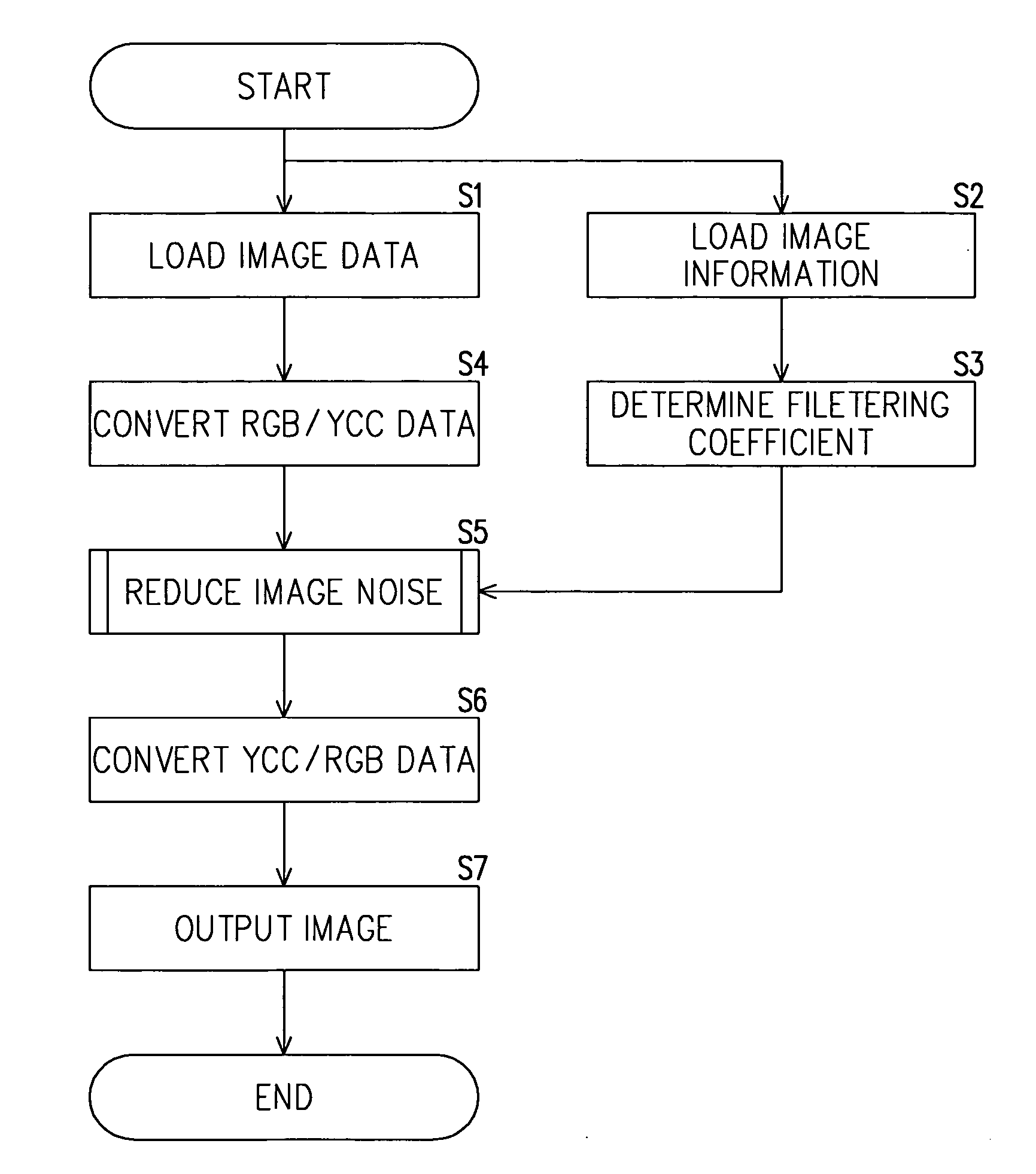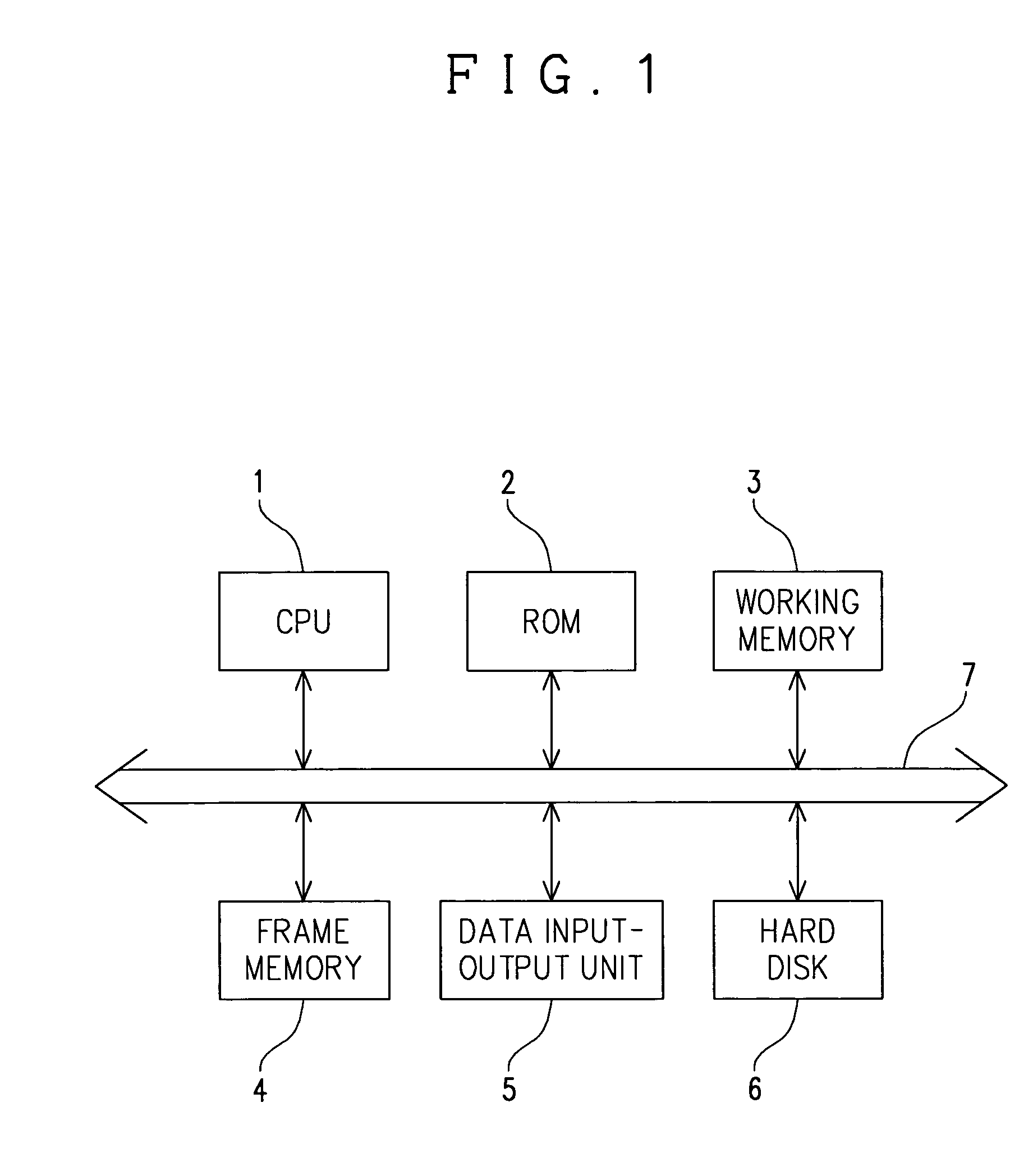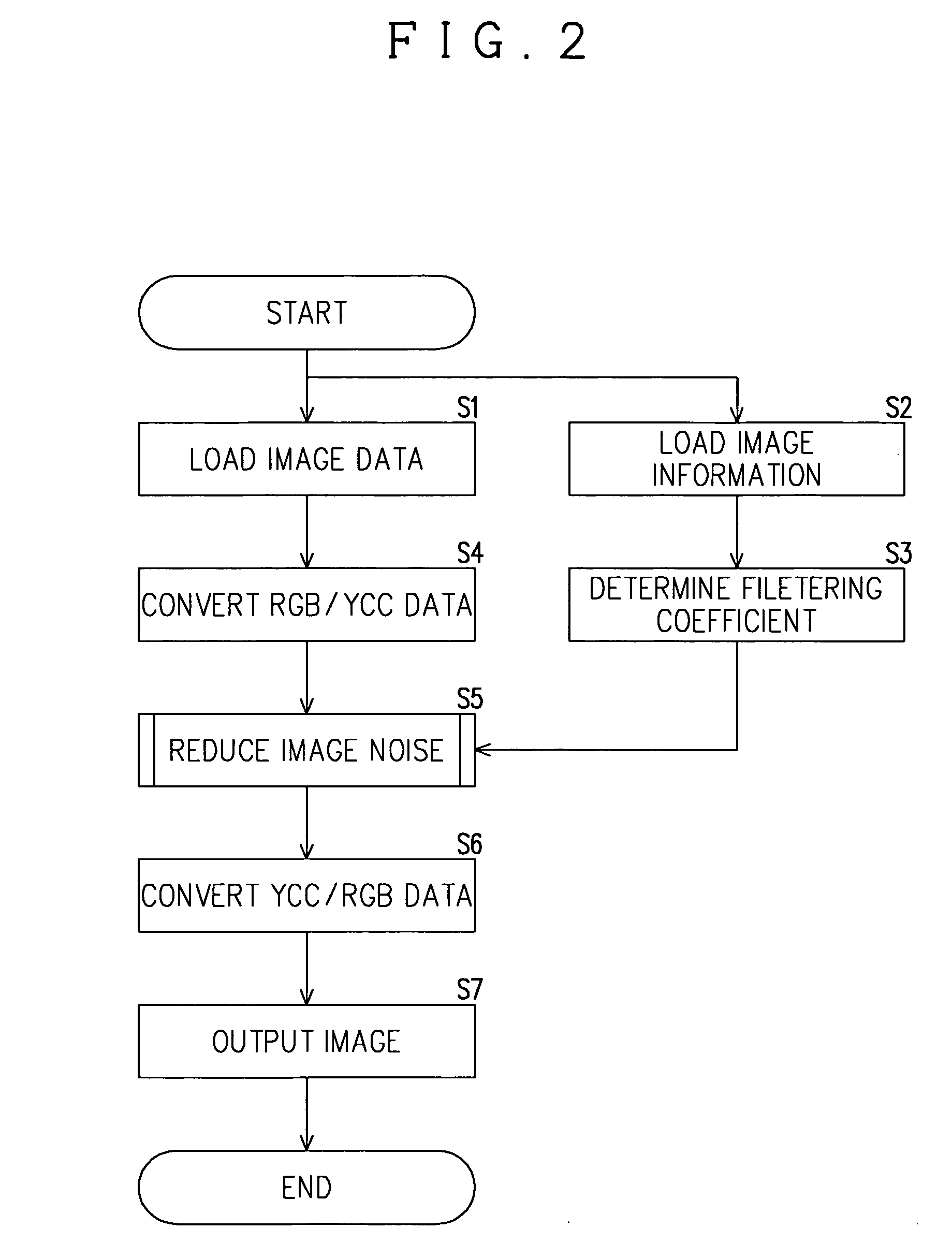Method for reducing noise in images
a noise reduction and image technology, applied in the field of image noise reduction, can solve the problems of deteriorating image quality, affecting the image quality, so as to achieve the effect of reducing image noise properly, reducing image quality, and reducing luminance differences small and small
- Summary
- Abstract
- Description
- Claims
- Application Information
AI Technical Summary
Benefits of technology
Problems solved by technology
Method used
Image
Examples
Embodiment Construction
[0043] Now, the description will be made for the structure of an image processing apparatus that realizes the method of reducing noise in images according to one embodiment of the present invention with reference to FIG. 1. An image processing apparatus comprises a computer with a CPU 1, a ROM 2, a working memory 3, a frame memory 4, a data input-output unit 5 and a hard disk 6, which are all connected to a bus 7. The ROM 2 serves to store an image noise reducing program, other computer programs and various parameters, while the working memory 3 that is required for realizing control by the CPU contains such as a buffer and register. The CPU 1 performs various calculations and processes based on computer programs stored in the ROM 2.
[0044] The frame memory 4 is a memory for storing image data obtained by decoding a still image compressed and encoded in JPEG format. Image data (R, G, B) inputted in the data input-output unit 5 are once stored respectively in separate frame memories ...
PUM
 Login to View More
Login to View More Abstract
Description
Claims
Application Information
 Login to View More
Login to View More - R&D
- Intellectual Property
- Life Sciences
- Materials
- Tech Scout
- Unparalleled Data Quality
- Higher Quality Content
- 60% Fewer Hallucinations
Browse by: Latest US Patents, China's latest patents, Technical Efficacy Thesaurus, Application Domain, Technology Topic, Popular Technical Reports.
© 2025 PatSnap. All rights reserved.Legal|Privacy policy|Modern Slavery Act Transparency Statement|Sitemap|About US| Contact US: help@patsnap.com



